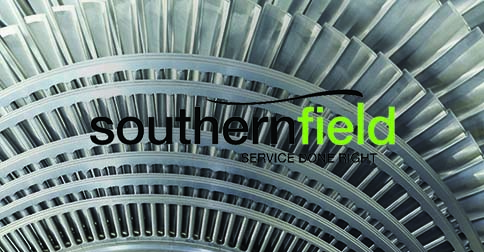Steam turbines are the engines that drive electricity generation at a power plant, and as such, are some of the most important, mission-critical components in a plant.
But many plants have had problems with their steam turbines over the years, requiring retrofits, upgrades, repairs, or outright replacements. That’s because several issues typically result in wear, tear, and equipment failure.
If you are aware of these issues in advance, it’s possible to reduce or prevent downtime, thereby saving money and increasing efficiency.
Here are issues common to both high-pressure and low to intermediate-pressure sections where a steam turbine’s problems can occur.
Do you have a problem or concern that needs to be addressed immediately?
Common High-Pressure Steam Turbine Problems
Certain sections of turbines operating in a high-pressure environment face particular challenges beyond what other turbines face. The reason why is simple: these parts are exposed to higher pressures and higher temperatures, particularly in the high-pressure (HP) section.
One issue is with clearances. Older turbines, or turbines with older HP sections, have problems with proper clearance that can lead to steam leakage. Often clearances aren’t tight enough, usually because of distortion of the blade ring and inner casing that can wear down components, affecting the clearance’s tightness.
Another issue comes with the steam inlet. It’s possible for the nozzle chamber to experience welded joint failure. Additionally, the seal ring can become distorted, resulting in a loss of steam pressure. Both of these situations can reduce performance and require more fuel being burned to get the same result, which directly affects your plant’s bottom line.
Throw in cracked bolts thanks to high temperatures, and it’s easy to see how high-pressure turbine sections are susceptible to problems caused by extreme operating environments.
Have you seen some of these issues in your equipment? Request a quote for steam turbine maintenance here.
Low- and Intermediate-Pressure Steam Turbine Problems
Low to intermediate-pressure sections in turbines have their problems as well.
Distortion is one of the primary steam turbine problems seen in these sections. Also, rotor reliability is reduced by a center bore in the low pressure (LP) section as well as shrunk-on discs that can increase vibrations of the turbine shaft, resulting in lower performance. This is typically found with older rotors. Another issue found in older turbine sections involves cylindrical airfoils that offer less performance than more modern versions.
Many of the problems that plant owners frequently face with low and intermediate-pressure sections are due to older components that aren’t as efficient or reliable as newer, more advanced versions. Part of the problem is that owners focus more on maintaining and upgrading HP sections rather than LP or intermediate-pressure (IP) sections, even though the latter two sections require regular attention and maintenance.
How to Address Common Problems Through Steam Turbine Maintenance
The best way to address these problems before they grow is to regularly conduct a rigorous maintenance schedule that inspects each section and critical component. It’s not enough to just look at them, though; you also need to engage in data analysis backed by computer modeling to monitor stress, wear and tear, and gradual degradation. Also, having a system by which maintainers can be alerted if a component reaches a certain threshold can prevent equipment failure through timely repairs or replacement.
If analysis dictates that you need a retrofit, a few options range from minimal to expansive in terms of scope. At the low end, you can make minor modifications to a particular unit to reach a specific goal for that unit’s performance. Above that, you can upgrade the entire steam path to include new seals and new rotors. Finally, you may have to replace an entire turbine section.But regardless of what retrofits are needed, you can mitigate the chances of equipment failure through maintenance as a predictable, planned optimization process rather than an emergency fix. It’s always better to plan maintenance, upgrades, and retrofits due to careful analysis and monitoring of a system than to be forced into taking action because the system wasn’t properly maintained.
How to Improve Steam Turbine Efficiency
Equipment upgrades and retrofits also have the added benefit of increasing operational efficiency. Even minor adjustments can lead to significant cost savings for the year.
Request a quote for steam turbine maintenance today, or contact us here to find out more about how we can help you improve steam turbine efficiency in your plant.


